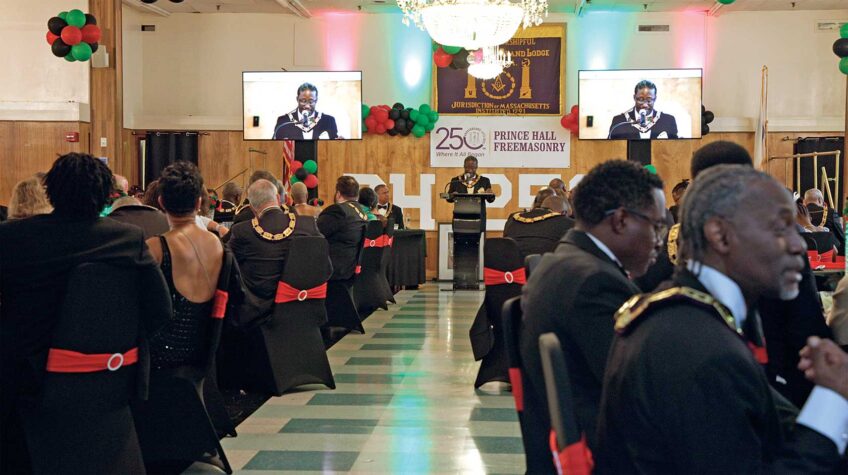A new initiative through Fidelity Investments will provide $250 million in scholarships and other educational supports to Black and Latino students and students from underserved communities in Boston and two other metropolitan areas in the United States.
The initiative, called Invest in My Education, will offer students financial support to attend a two-year college, four-year college or certificate program, while also providing mentorship opportunities and grants to nonprofit organizations focused on improving graduation rates.
Nageeb Sumar, head of social impact at Fidelity Investments, who is leading the Invest in My Education initiative, said that as Americans feel the effects of inflation on the price of higher education, finances should not keep students from attending post-secondary programs.
“We don’t want the financial barrier to be a barrier for people to apply and persist and succeed in a post-secondary degree,” Sumar said. “We know that particularly for students right now, they are questioning the value of a post-secondary degree because of the cost associated with it.”
Antoniya Marinova, director of education to career at Success Boston, a Boston nonprofit focused on improving college completion, said that post-secondary education is important to allow students access to jobs that provide mobility.
“In our economy today, a form of post-secondary training is in fact necessary for getting a job that not only pays well right now, but is a high-growth, high-wage trajectory that makes one actually able to sustain a family and household,” Marinova said. “I think it’s just the nature of our industry mix and our knowledge-based economy that a high school degree, unfortunately ends up not being enough in the medium- and long-run.”
A holistic approach
The program will take what Fidelity is calling a holistic approach. The $250 million will be split between scholarships, retention and completion grants — designed to assist students close to graduation but at risk of dropping out due to unpaid tuition or academic balances — and ecosystem-building grants which will be available to nonprofit organizations with missions focused on improving graduation rates.
Of those funds, $190 million have been allocated to scholarships through the United Negro College Fund (UNCF). Those resources will be available to applicants as last-dollar scholarships, filling the gaps between all other aid and the total tuition to keep students from having to take out loans.
The remaining $60 million will go to the two grant programs under the Fidelity initiative, though the specific breakdown of those funds and the nonprofit organizations that will be involved have yet to be announced.
The program will also incorporate access to internship and apprenticeship guidance, financial education programming and mentorship from Fidelity associates.
While Sumar said Fidelity Investments expects some students may pursue degrees related to financial services, the program is available regardless of what major students choose.
“We certainly hope and anticipate that some students will be interested in financial services and in the work that Fidelity does … but this is not an explicit way in which we’re trying to create a talent pipeline,” Sumar said. “This is really a community driven effort to support students.”
State-specific aid
The program, which is initially being launched in the Boston metro area, the Dallas-Fort Worth area in Texas and the Raleigh-Durham area in North Carolina, requires students attend programs in the state in which they reside.
Sumar said the geographic constraint helps students develop social capital and creates a local cohort of students involved in the program.
“Given those two points, we really thought that having a geographic limit and providing flexibility so that students can go anywhere in their state, both private and public — but within the state — would help kind of create that social fabric and that social network so they are able to succeed both in college and career,” he said. “That’s the hypothesis — that we’ll create those in-state networks to help students.”
Applications for Fidelity’s Invest in My Education initiative opened in March and are due May 4, requiring two short essays, a short video and a reference. To be eligible, students must have heritage from communities of color, must be between 16 and 24 years old and must be Pell Grant-eligible.
Students must also have a GPA between 2.5 and 3.5. Sumar said the program aims to draw from what he calls the “mighty middle.”
“A lot of traditional scholarship programs focus on high-achieving students and students at the top of the academic ladder,” Sumar said. “We really think that the bulk of the students that are going to carry and be the engine for our economy going forward are in the mighty middle.”
Once accepted, if they maintain at least a 2.5 GPA, students can expect support from Fidelity through the course of their degree, Sumar said.
‘It will take a village’
The Invest in My Education initiative comes amid other local efforts to decrease financial barriers for post-secondary education. In late March, the City of Boston announced changes to its tuition-free community college program, expanding the plan to cover up to three years of tuition costs for any Boston resident at six partner colleges in the city.
“I think it really matters that the city is working to simplify the red tape keeping eligible students from actually signing up,” Marinova said. “Even if there’s financial aid itself, in general if there’s a cumbersome application process, I think it’s bound to result in fewer students taking advantage of these benefits.”
The different programs and initiatives come together to create what Marinova said is a necessary, more comprehensive approach to increasing post-secondary education access.
“It will take a village; not one of our organizations can do it alone,” Marinova said. “Whether we have a lot of civic leadership or a lot of financial resources, this is too complicated and multi-faceted of a challenge that we’re trying to tackle to do it alone.”






